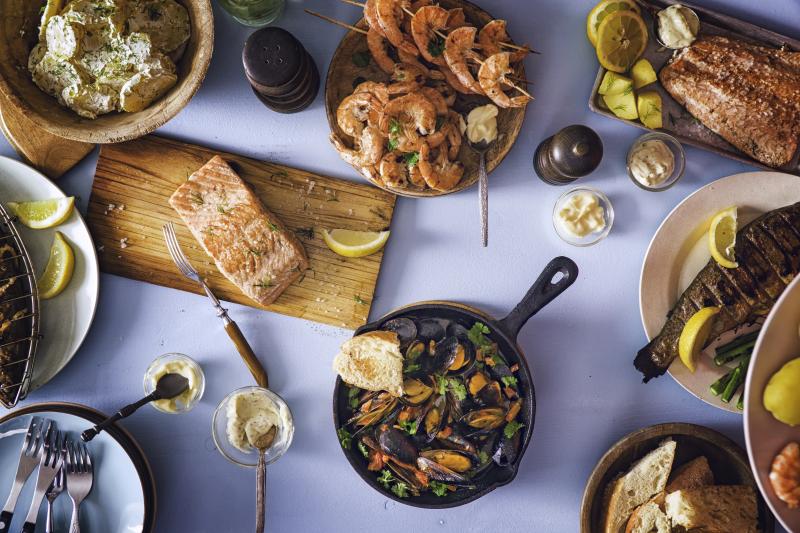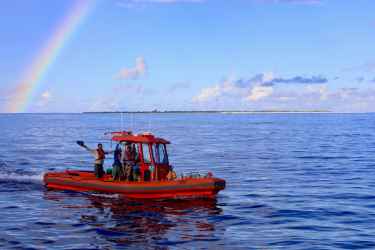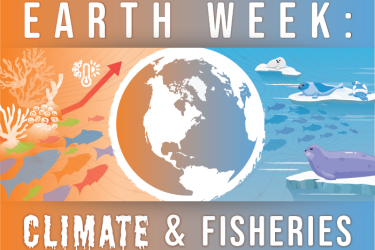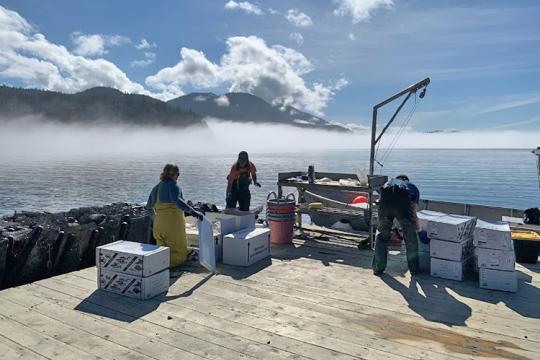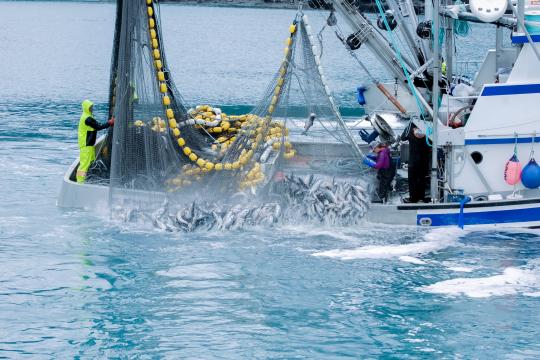We all have a stake in a stronger, more resilient U.S. seafood industry. Seafood is an important source of protein and other nutrients that are essential for strong bones, brain development, and healthy immune and cardiovascular systems. The U.S. seafood industry is a powerful economic driver—supporting 1.2 million jobs and adding $69.2 billion to the gross domestic product in 2017. And for decades, the United States has been a global leader in sustainable seafood production. In short, U.S. seafood is good for your health, good for the economy, and good for the planet.
While the pandemic has created serious, ongoing challenges, NOAA Fisheries has taken a proactive role in monitoring and adjusting to COVID-19. Our actions are driven in part by our rapid economic assessments that identified immediate and long term impacts on the seafood industry. The United States recently reaffirmed its commitment to building a stronger seafood industry. We’re taking bold steps to expand sustainable production and make U.S. products more competitive in domestic and foreign markets. In May, the President signed an Executive Order that will serve as the map for several exciting initiatives, including the creation of 10 Aquaculture Opportunity Areas.
Growing our domestic aquaculture industry is critical to expanding and stabilizing the supply of sustainable seafood in the face of environmental and economic uncertainty. Aquaculture operations diversify seafood production and provide a year-round source of high-quality jobs and economic opportunities in coastal communities. These jobs augment seasonal tourism and commercial fishing.
The first two Aquaculture Opportunity Areas will ultimately be located somewhere within the federal waters off southern California and in the Gulf of Mexico. By tapping into existing regional industry and infrastructure, each of the final 10 areas selected through 2025 will support new commercial marine farm sites.
Also under the Executive Order, the Department of Commerce is co-chairing the newly-established Seafood Trade Task Force. The group is charged with developing a comprehensive interagency seafood trade strategy that will support fair market access for U.S. seafood products. While the strategy is being developed, fishermen and other producers impacted by retaliatory tariffs can apply for direct support through the U.S. Department of Agriculture’s Seafood Trade Relief Program.
In May, the Secretary of Commerce announced the allocation of $300 million in fisheries assistance funding provided by the Coronavirus Aid, Relief, and Economic Security Act, also called the CARES Act. These funds are available to states, Tribes, and territories with coastal and marine fishery participants who have been negatively affected by COVID-19. Since then we’ve worked with our partners, the interstate fisheries commissions, to award CARES Act funds to the states, tribes, and territories based on their spend plans. The following states have already received approval of their spend plan and started the application process for fishery participants:
- Alabama
- California
- Georgia
- Louisiana
- Massachusetts
- North Carolina
- Oregon
- Rhode Island
- South Carolina
- Virginia
- Maine
We expect several more state spend plans to be submitted and approved in the coming weeks.
At a time when COVID-19 is keeping us apart, a simple, singular message has united a coalition of stakeholders across all seafood sectors: Eat Seafood, America! If you’re reading this and wondering how you can help secure a stronger future for our national seafood industry, I have good news. Staying healthy, investing in our economy, and supporting sustainable practices is as simple as eating more U.S. seafood. Check labels or ask the clerk at the seafood counter where a product originated. All seafood sold in the United States is required to have a country of origin label right on the package. And if it’s U.S. seafood, it’s sustainable seafood.
Like others, I’ve been adapting to cooking more seafood at home. Let’s keep it up—and even try to diversify. You can find delicious recipes and facts about what makes U.S. seafood sustainable on FishWatch. More information on the health benefits of seafood is available through Eat Seafood, America!, a collaborative effort that NOAA Fisheries is proud to support.
Chris Oliver
NOAA Fisheries Assistant Administrator
